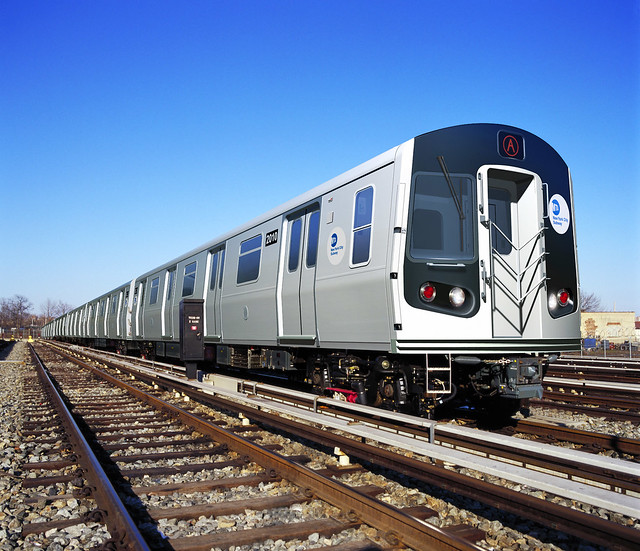As the dog days of August melt away, transit news generally grinds to a halt. Generally, the subways keep running through what the MTA feels are low ridership days, but until the September opening of the 7 line and the next round of MTA board meetings roll around, action on outstanding items is slow. Instead, we fill the hours debating other issues surrounding livable streets and livable cities and wonder how we wound up with a supposedly populist who’s even considering removing popular populist features of New York City.
But that’s neither here nor there for this morning’s purposes. Today, we revisit the MTA’s capital plan. It’s been a few weeks since Gov. Andrew Cuomo committed to delivering over $8 billion in state funding for the five-year program. We still haven’t heard if the city will take Cuomo up on his challenge to contribute more money, and we don’t know how the state is going to generate that $8 billion. New York can’t just print money, and the Governor has spent the last few years rolling back the MTA-supporting payroll tax. He seems downright hostile as well to support of a Move New York-esque traffic pricing plan, and the mayor hasn’t leapt to pick up that mantle either.
Those are issues that are going to have to be solved in the coming months, but interested parties watching the happenings are growing sick of waiting. Enter Crain’s New York. The business magazine opined on the need to just fund the darn thing already in an editorial by three members of the Business and Labor Coalition of New York’s Infrastructure Initiative Committee:
New York’s commitment, or lack thereof, is a reflection of our state’s priorities and an indicator of our future. According to the General Contractors Association of New York, 83% of subway stations are in poor repair, 37% of MTA’s mainline signals have exceeded their useful life, and tunnels and bridges in dire need of repair are too numerous to name. Simply fixing the system, debt aside, requires a serious capital investment. Completing projects conceived to improve the current system—including the long-awaited Second Avenue subway—requires, at the very least, the funding of the five-year capital plan approved by the MTA board of directors.
Again, this is not merely a matter of transportation, safety or convenience. The 2010-2014 capital program generated 350,000 jobs and $44 billion for New York state. According to the New York Building Congress, the MTA alone accounts for 25% of New York’s construction industry.
The governor is concerned about how to pay for the capital plan and does not want to raise taxes. This is understandable on both a political and practical level. However, it is absolutely necessary that the governor, mayor and legislature find a way to fund this plan.
Crain’s editorial is important because it touches upon the first elephant in the room: It’s impossible for the state economy and construction industry to live without the MTA’s capital plan. It generates such a significant amount of work and jobs that letting the money lapse without a real way forward would be tantamount to financial suicide. The General Contractors Association has long been on the side of the MTA’s when it comes to asking for money, and the 2015-2019 capital plan is no exception.
And yet, the contractors are also the second elephant in the room and one no one wants to discuss. Setting aside for now the fact that the MTA’s five-year plan asks for significant funding for projects that don’t yet have set budgets, the agency’s construction costs are out of line with other transit agencies the world over. For a sampling, read through Alon Levy’s various posts on cost comparisons. The MTA is asking for approval for a $28 billion plan because that’s what their costs are alleged to be, but $28 billion simply doesn’t go that far in New York City. You could build Crossrail 2, for instance, three times over with $28 billion, and nothing in the MTA’s capital plan approaches the scale of London’s massive expansion efforts. Similar, the 125-mile Paris Metro expansion is set to cost only around $30 billion total.
So these are the two elephants, competing or perhaps different sides of the same coin. We can’t live without the MTA capital plan because of the effect it has on the construction industry, but the construction industry seems to be forever pushing us toward an unaffordable cliff. Reconciling these two competing interests should be a part of the MTA’s five-year planning efforts, but so far, it has been noticeably absent from the conversations.





















